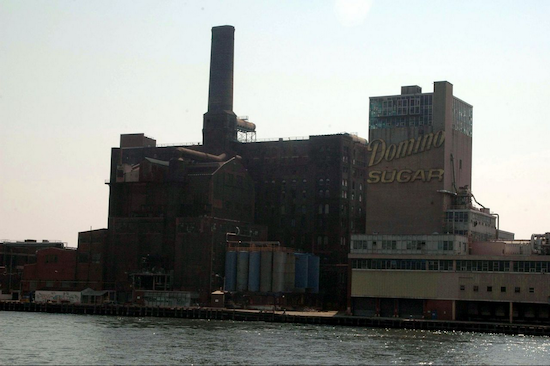Landmarks Preservation Commission to Two Trees: Domino factory makeover plan must be refined

Screen Shot 2013-12-17 at 4.37.42 PM.png
Sugar, ah, honey, honey.
The city Landmarks Preservation Commission sent Two Trees Management’s makeover plan for the historic Domino Sugar Refinery back to the drawing board.
Some of the commissioners at a public hearing in Lower Manhattan Tuesday objected to the height and massing of proposed glass-clad additions to the roof of the iconic former factory on the Williamsburg waterfront.
